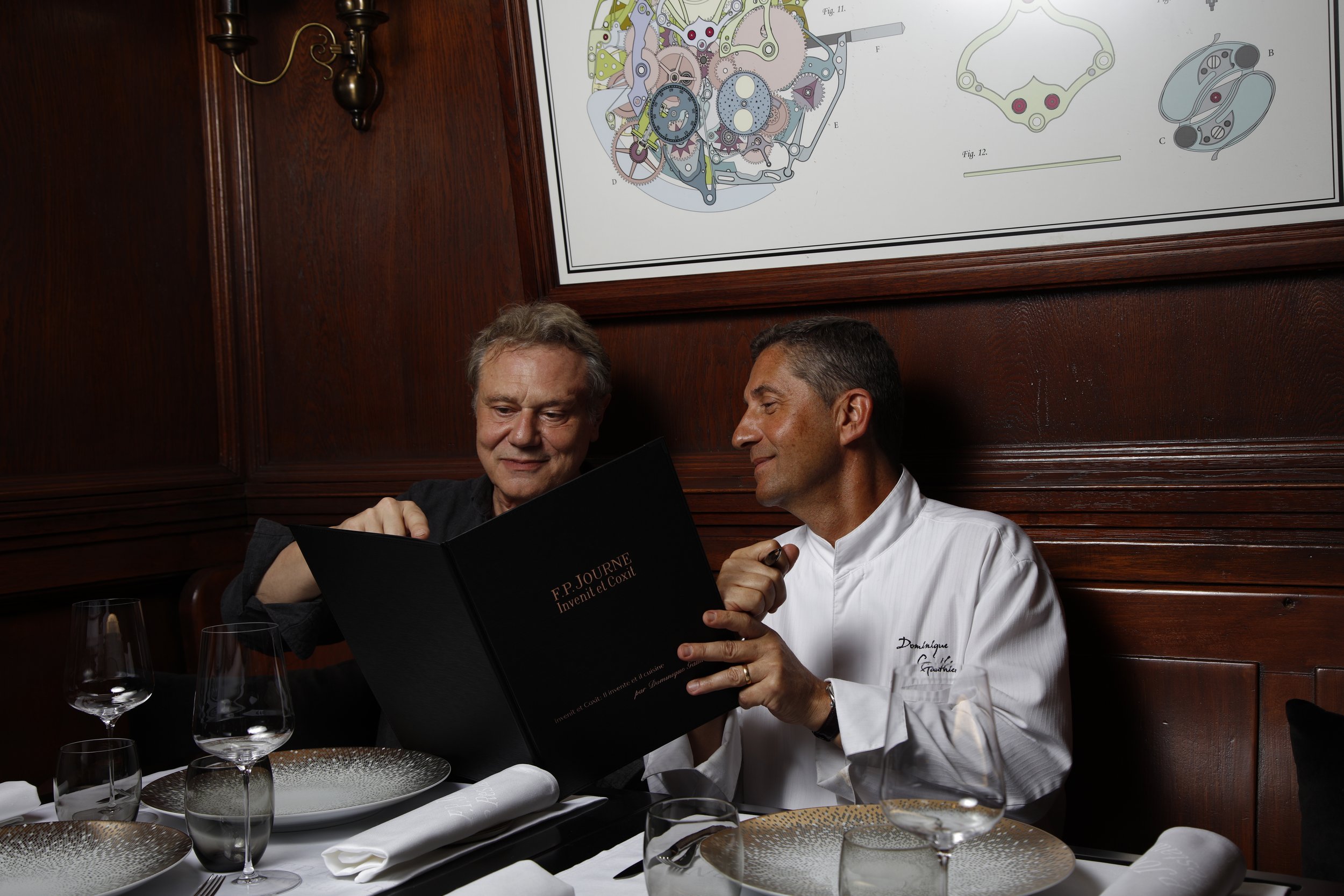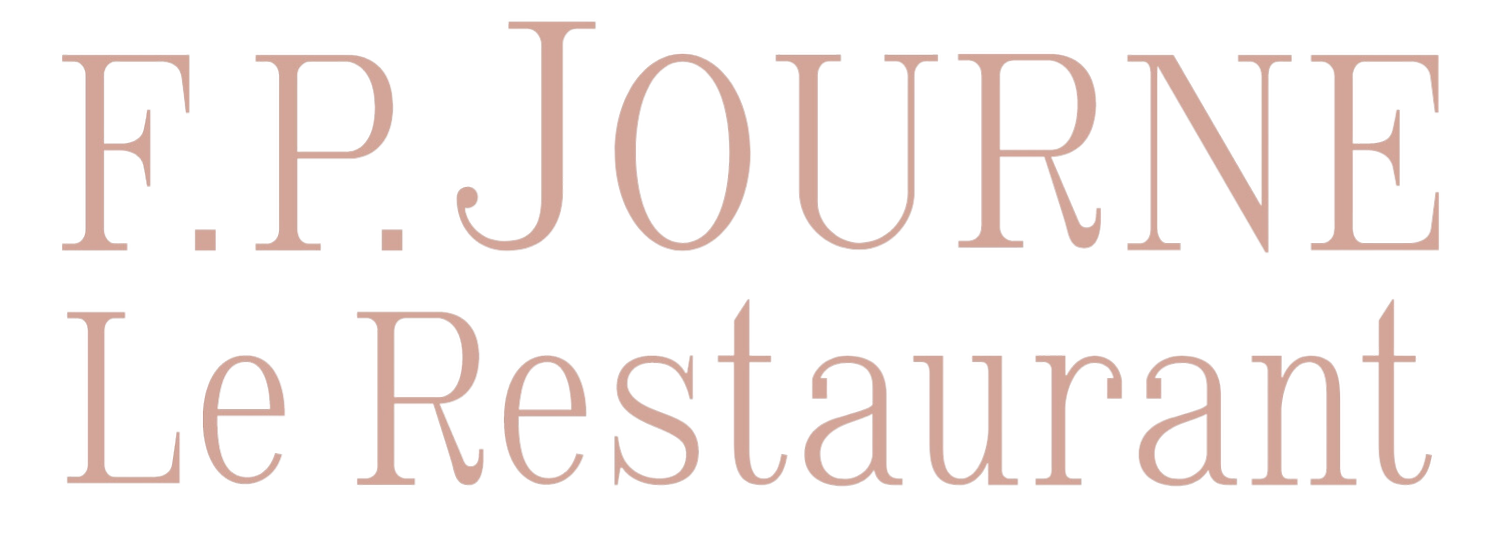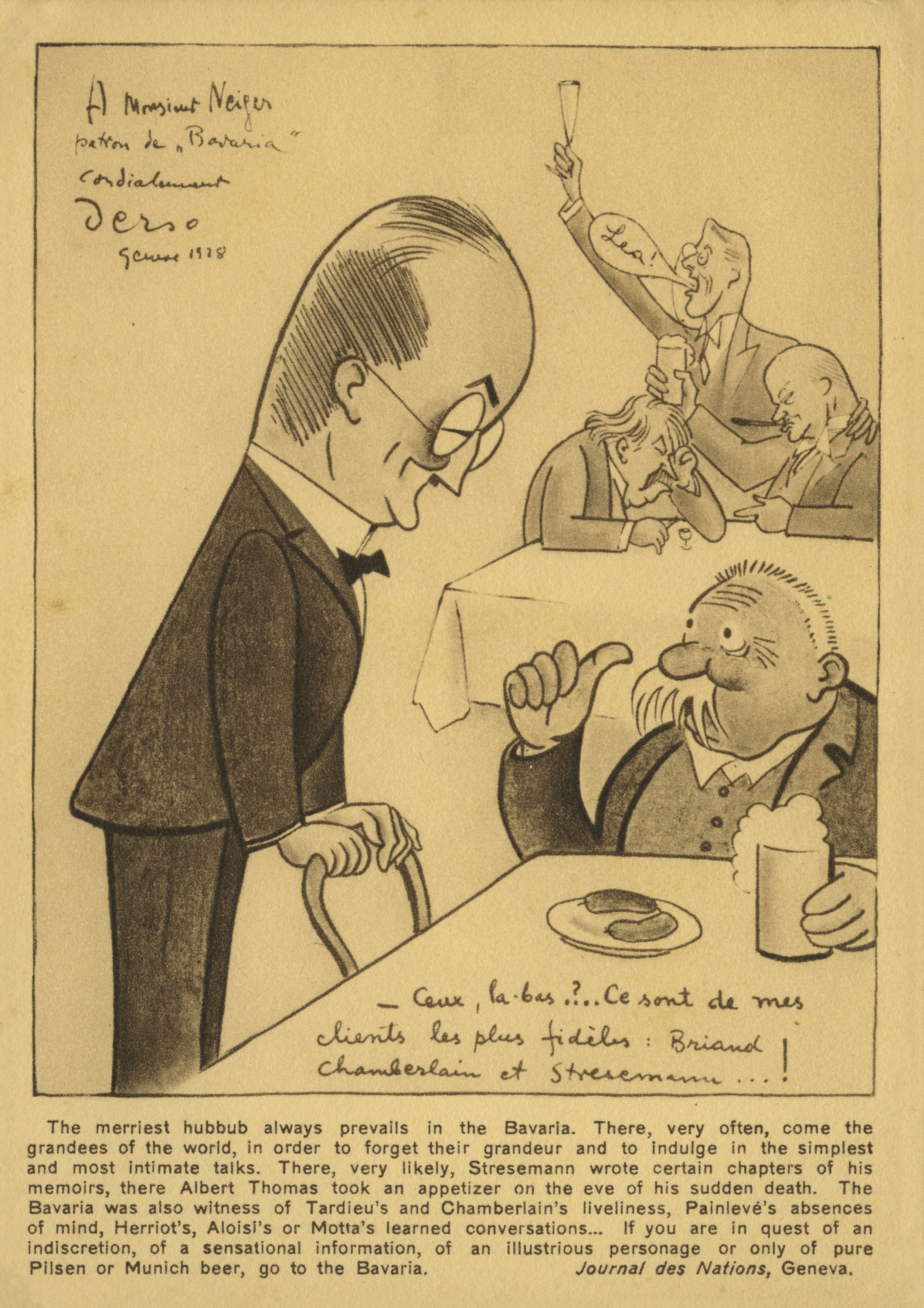
Dominique Gauthier
François-Paul Journe
When Haute Gastronomy meets Haute Horology
The Restaurant
The meeting of two artists
François-Paul Journe was looking for a bright, seasoned chef to revive the heritage arcade on Rue du Rhône.
Dominique Gauthier was dreaming of a new challenge, of a fine address to invest in Geneva, after three decades in the kitchens of Le Chat Botté.
A mutual friend, who liked one's watches and the other's cooking, brought them together. And they clicked. Don't they speak the same language, that of exacting standards, passion and attention to detail? Together, they imagined an atmosphere, an exceptional place. Together, they designed a "bistrot chic", with a sumptuously vintage setting, fine wines and classy cuisine, the likes of which you'd hardly find at the end of Lake Geneva. "F.P.Journe Le Restaurant" was born of this encounter between two artists whose registers may seem far apart, but are so close in reality. A table where horological, oenological and gastronomic excellence come together.
The Restaurant
The history of the Bavaria
Banque L. BAEZNER & Cie, entrances Rue du Rhône 49 and Grand Quai 30, opposite the English Garden - © Imp. Atar, Genève, Corraterie 12
Dominique Gauthier and François-Paul Journe have taken over a historic monument to eating and drinking.
A legendary bistro, a listed jewel in the crown of Geneva's bistro heritage, the last remaining witness to the great cafés and restaurants that lined the Rue du Rhône at the end of the 19th century, the scene of the blossoming of international Geneva.
Located at 49 Rue du Rhône, the building, aligned with the Hôtel Métropole, was built between 1852 and 1860, after the demolition of the fortifications on the Grand Quai, now the Quai du Général-Guisan. In 1912, a former druggist, Adolphe Neiger, opened a brewery specializing in German beers on the first floor, in a former Baezner bank branch overlooking both the English Garden and the Rue du Rhône. Hence the name: Bavaria. Madame Neiger, a strong-willed woman who helped her husband in the bistro, also made, as Jean-Claude Mayor recounts in his book La bouteille, la table et le lit à Genève à la Belle Époque*, "excellent jams of Mirabelle plums picked from her orchard in Belotte".
*"Drink, food and lodging in Geneva during the Belle Époque"
In short, Bavaria would have remained just another foam factory if the fledgling League of Nations, founded in 1919 in the wake of the 1st World War, hadn't held its regular meetings at the Salle de la Réformation, just a block away. It's proverbial: after long palavers, the international delegate is thirsty. And the Salle de la Réformation has no refreshment bar. So the brasserie became the "stamm*" for these SDN gentlemen. Ministers, heads of state and journalists from all over the world dined here. Neville Chamberlain, England's Chancellor and Minister of Health, forgot his umbrella one evening. Aristide Briand, several times President of the Council in France, has his napkin ring there.
*In Switzerland, a place where a group of friends or members of a society meet regularly.
Geneva, the Grand Quai. Restaurant Bavaria and Hôtel Métropole.
Press photograph
© Agence Rol - Bibliothèque nationale de France
© Derso and Kelen
Two Hungarian caricaturists, Derso and Kelen, who had taken refuge in Geneva, liked to sketch all these people. Among their drawings, we recognize the brasserie's loyal customers: Briand, Chamberlain and Gustav Stresemann, German Foreign Minister. Over the years, the walls of the establishment became studded with almost two hundred sketches representing the phoenixes of diplomacy at the time. They remained there until the change of name at the dawn of the 1980s. The caricatures, which adorned the brasserie to the great pride of the Neiger couple, are now part of the private collection of banker Ivan Pictet.
Derso and Kelen - Centre d'iconographie de la Bibliothèque de Genève
The first décor of the Bavaria was not refined. It evoked Germanic folklore and the atmosphere of the Bierstuben. The lower walls were covered with wainscoting, while the upper sections were adorned with large mirrors and decorative panels with motifs drawn from folk art: small birds and drinking scenes, medieval or country.
Today's beautiful décor dates back to 1942, when the brasserie underwent a complete renovation by architect Jean Falciola and designer Louis Amiguet. Tall, dark oak panelling and large mirrors adorn the walls. As before, the ceilings were fitted with geometrically patterned formwork. The rounded angles of some of the woodwork, found on the entrance revolving door or the counter, feature discreet incised rosettes, lending a rustic touch to the overall atmosphere.
And when, in 1982, the beer palace became "Le Relais de l'Entrecôte", the sumptuous setting hardly changed. After twenty-five years of good, loyal grilling, the address became the scene of several legal battles in 2006. In 2012, the Geneva authorities, in a bid to save the restaurant and its atmosphere, classified the bistro's décor, from the woodwork to the ceiling, including tables, chairs and mirrors.
In 2014, Le Relais had to move next door to Rue Pierre-Fatio. The ex-Bavaria became "Le 49 Rhône" in 2015. Then "Marjolaine" when, in 2018, Philippe Chevrier was called to the rescue by the owners and transformed the heritage arcade into an upscale trattoria. The restaurant will close in March 2019 to allow for a lengthy renovation of the structure and upgrading to new standards, before being reborn as "F.P.Journe Le Restaurant", still in its charming decor. At the helm: Michelin-starred chef Dominique Gauthier and artist-horloger François-Paul Journe, an epicurean with a passion for fine wines. And so begins a new chapter in a saga spanning more than a century.
The watchmaker’s touch
François-Paul Journe's restaurant on the rue du Rhône has a few evocations of his art and history between the heritage woodwork. The tables are not numbered, but bear the names of famous "artisans of the time". The wall frames are now adorned with reproductions of the clever mechanisms and subtle components found in the brand's creations. As for the knives, their handles, house, wheels, screws and hands. So, bathed in the magic of the watch movement, you can enjoy your meal.








